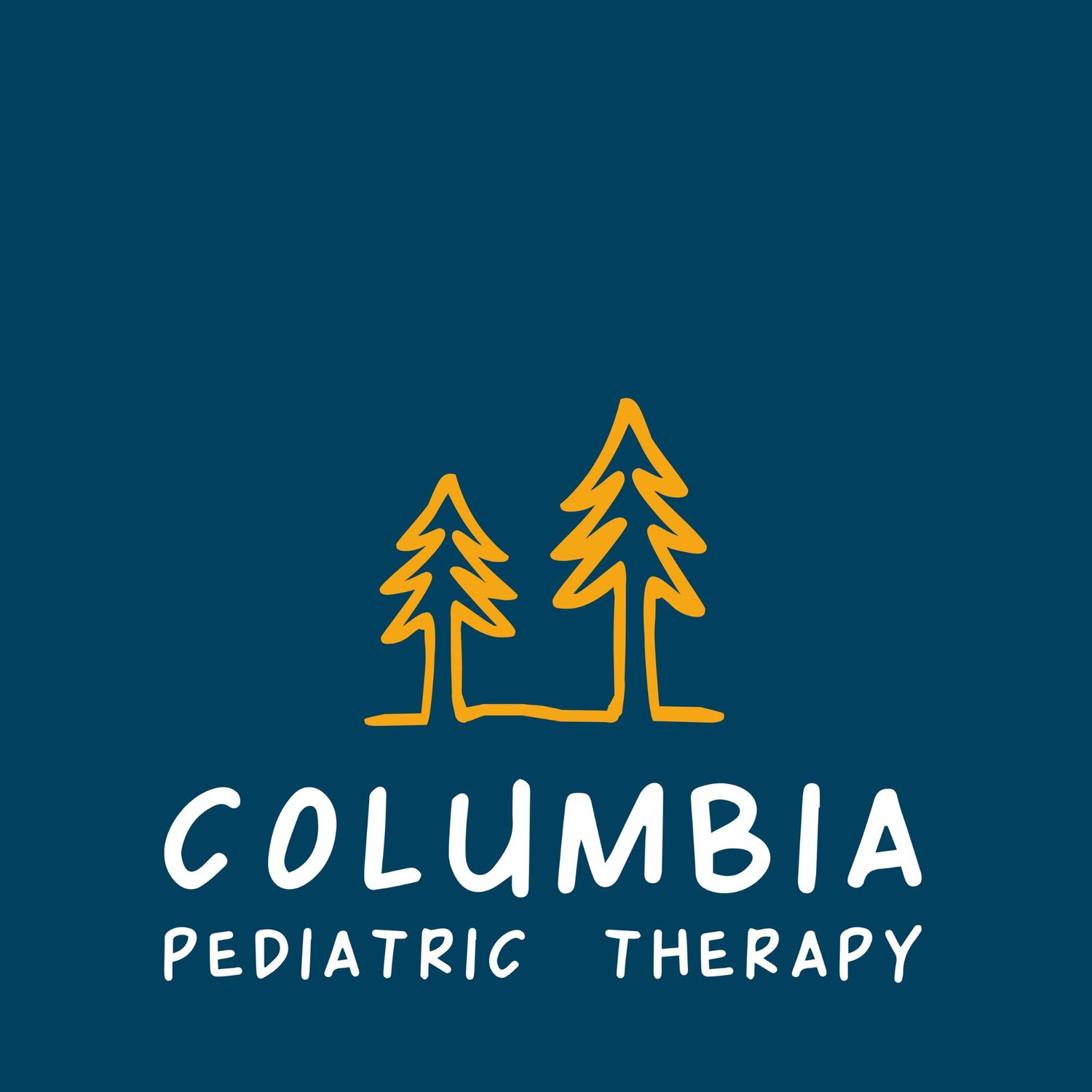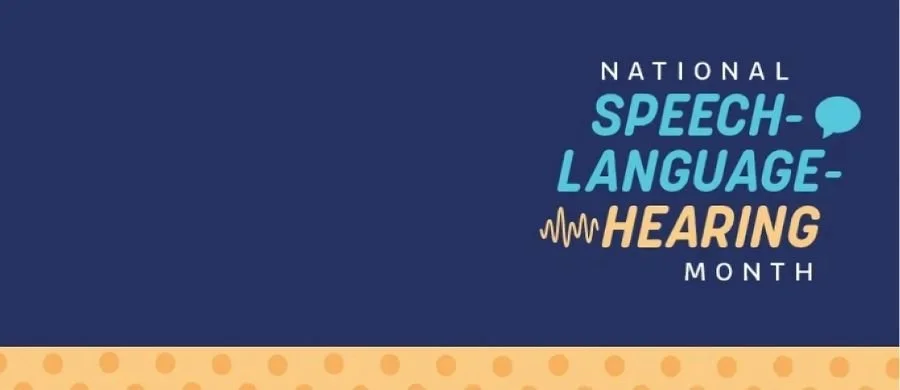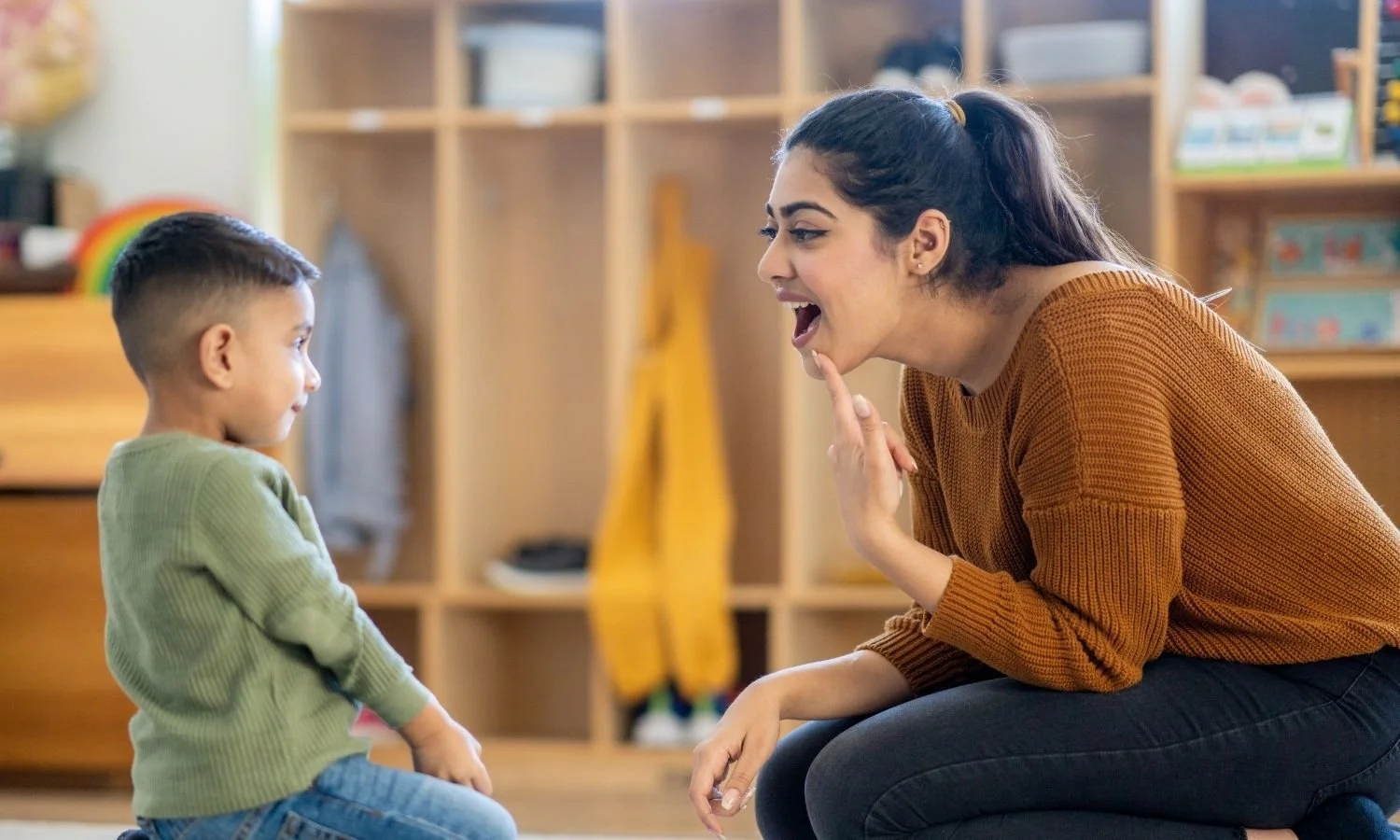Celebrating National Speech-Language-Hearing Month: What We Do and Why We Love It
By Christine Hinkle, M.A. CCC-SLP
Every May, we celebrate National Speech-Language-Hearing Month—a time to raise awareness about communication disorders and the life-changing work of speech-language pathologists (SLPs).
Communication is something many of us take for granted. From a baby’s first word to a Zoom meet-up between friends, the ability to express ourselves and connect with others is at the heart of who we are. But for many people, communication can be a daily challenge due to speech, language, voice, or swallowing disorders.
That’s where SLPs come in.
At Columbia Pediatric Therapy, we’re proud to support our pediatric clients on their communication journeys. This month, we’re shining a spotlight on what communication disorders are, the important work SLPs do, and—most importantly—what our own SLPs love most about the work they do every day!
What Are Communication Disorders?
Communication disorders are conditions that affect a person’s ability to speak, understand, read, write, or interact socially.
They can occur at any stage in life and in many different forms. Some communication disorders are developmental, while others are acquired; they present themselves on their own, or they could be secondary to another condition.
Across the lifespan, communication disorder might look like:
A toddler who isn’t talking yet
A school-aged child whose speech is difficult to understand
A teenager whose stutter impacts their ability to speak aloud in class or make friends
An adult who has difficulty understanding spoken and written words after a stroke
An elderly individual with dementia who has difficulties communicating clearly or eating and swallowing safely
Here are some additional quick facts from the American Speech-Language-Hearing Association (ASHA)[1]:
Nearly 1 in 12 U.S. children ages 3-17 has had a disorder related to voice, speech, language, or swallowing
More than 3 million Americans stutter
Approximately 9.4 million adults report having a problem using their voice that lasted one week or longer
Approximately 2 million Americans suffer from aphasia
Approximately 37.5 million Americans report having some trouble hearing
What Do Speech-Language Pathologists (SLPs) Do?
SLPs, also known as speech therapists, work to prevent, assess, diagnose, and treat speech, language, social communication, cognitive-communication, and swallowing disorders in children and adults[2]. They can work in a variety of healthcare, education, research, and professional development settings.
To become an SLP, individuals need to earn a Master’s degree, complete required clinical experience, and pass a national examination[2]. Additional certifications and licenses are typically needed, and SLPs must participate in many hours of continuing education throughout their careers in order to maintain their certifications and licenses.
Additionally, SLPs have a wide scope of practice[3] that includes:
Speech Production
Fluency
Language
Social Communication
Cognition
Voice
Resonance
Feeding and Swallowing
Alternative and Augmentative Communication
Auditory Habilitation/Rehabilitation
What Our SLPs Love About Their Work
National Speech-Language-Hearing Month is the perfect time to highlight our outstanding SLPs at Columbia Pediatric Therapy. Here’s what some of them had to say about their work as SLPs:
“My favorite part of being an SLP is seeing people grow! Could be the kids, could be the parents and caregivers, could be peer therapists. Growth can be challenging, but so rewarding!” - Kendra H., Owner
“As an SLP, I get to support kids through creativity and play. I love empowering kids to communicate in whatever way feels most authentic to them, and seeing their confidence grow as their communication skills grow. Every day brings new challenges and new opportunities, and I'm so grateful for the trust families place in me to support their kids.” - Brigid P.
“Something I love about being an SLP is that there is always room to grow. There is so much to learn within the field, many different hats to wear, and overall just an endless number of ways to develop professionally. The best part is that as we grow, our clients benefit and grow, too!” - Christine H.
Final Thoughts
Communication is a human right—and SLPs are instrumental in making sure that their clients have access to this right.
Even if you aren’t an SLP, there are a multitude of ways to support those with communication disorders and promote communication awareness. They may be as simple as:
Being patient and listening attentively when someone struggles to communicate
Sharing resources and encouraging early intervention
Advocating for accessible communication tools in schools, workplaces, and communities
Reaching out to a professional if you’re concerned about a loved one’s communication skills
This month, and every month, we’re honored to help individuals find their voice. We’re so proud of our amazing team of SLPs—and grateful for the families and clients we get to support each day. Thank you for being part of our community!
References
1. American Speech-Language-Hearing Association. (n.d.). Quick facts about asha. American Speech-Language-Hearing Association. https://www.asha.org/about/press-room/quick-facts/?srsltid=AfmBOorq8EDbj1mLBkCkG2nCGZzaoni8BdcpwojoNOEW_lEuxTQuPnRC.+%28n.d.%29.
2. American Speech-Language-Hearing Association. (n.d.-b). Speech-language pathologists - job description and career information. American Speech-Language-Hearing Association. https://www.asha.org/students/speech-language-pathologists/?srsltid=AfmBOoof5gF142CKTcR45TLYK7i7MCN1fh2EBW37lnGyXUsMGksb1E8k
3. American Speech-Language-Hearing Association. (1970, January 1). Scope of practice in speech-language pathology. American Speech-Language-Hearing Association. https://www.asha.org/policy/sp2016-00343/?srsltid=AfmBOoo60KPsgIPoyzzIyjgvXT9Bv8gtYleLMnfzi0bF-K2wtSIKXjEy




